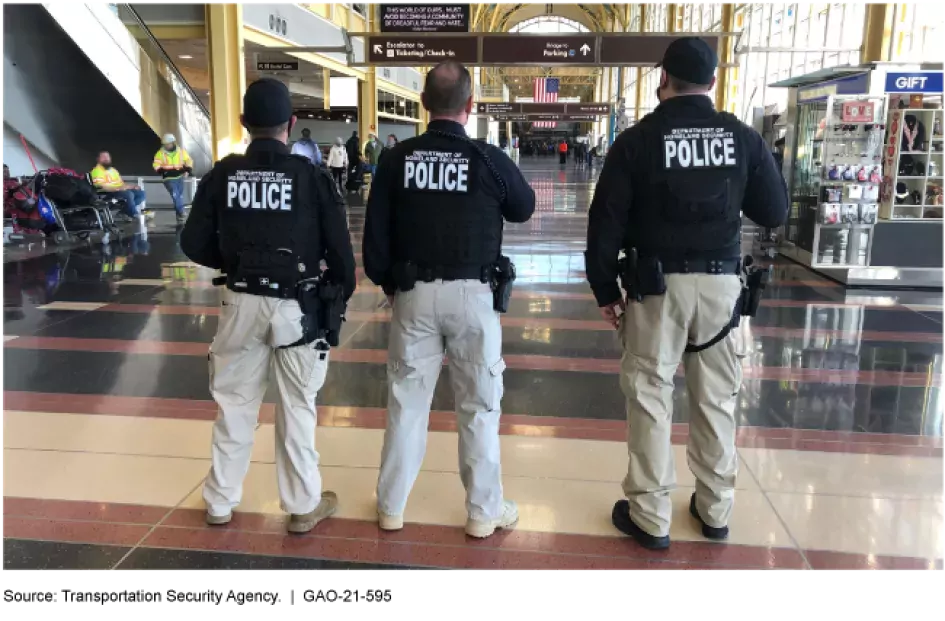From Hijacking to COVID-19: 60 Years of the Federal Air Marshal Service
This month, the Federal Air Marshal Service (Service) marks its 60th anniversary. The Service was originally created in 1961 to counter airplane hijackers. In 1962, the first “Sky Marshals” were sworn in.
At the time of the 9/11 terrorist attacks, 33 air marshals operated on U.S. flights. Since then, the Service has grown to employ thousands. In March 2003, the Service moved from the Department of Transportation to the newly formed Department of Homeland Security’s Transportation Security Administration (TSA).
In today’s WatchBlog post, we’ll look at the Service’s evolution and some of the challenges it has faced.
Image

What do federal air marshals do?
The Service is tasked with promoting confidence in the nation’s civil aviation system through the deployment of air marshals to protect U.S. air carriers, airports, passengers, and crews. To do this, the Service deploys armed federal law enforcement officers—air marshals—to provide an onboard security presence on selected flights of U.S. air carriers travelling within the U.S. and around the world. They also perform non-flight law enforcement work, such as providing a security presence at airports and national events like presidential inaugurations.
What challenges does the Service face?
Air marshals’ heavy travel requirements have resulted in longstanding quality of life challenges such as unpredictable work schedules, and sleep and health issues.
In our January 2021 report, we looked at these challenges and the Service’s steps to address them. We found that while the Service has taken steps to assess air marshals' individual health—such as requiring medical exams—the Service has not comprehensively assessed the overall health of its workforce and has not developed a plan to do so. We recommended that the Service implement a plan to assess the health of its workforce and monitor the extent that air marshals' shifts are consistent with guidelines. The Service agreed and is working to address this.
How has COVID-19 impacted the Service’s operations?
The onset of the COVID-19 pandemic brought new challenges and changes. In a June 2021 report, we looked at these issues.
During the pandemic, air travel volume changed and the Service adjusted the number and types of flights air marshals covered. In April 2020, amidst a decline in U.S. carrier flights, the number of flights the Service covered declined by 90% compared to average monthly flights pre-pandemic. The Service made operational changes and by June 2020, the Service had resumed pre-pandemic flight levels. During the pandemic, the Service also increased air marshals’ non-flight work, such as providing a security presence at airports and national events.
To find out more about our work on the Federal Air Marshal Service, see GAO’s January 2021 and June 2021 reports.
- Comments on GAO’s WatchBlog? Contact blog@gao.gov





